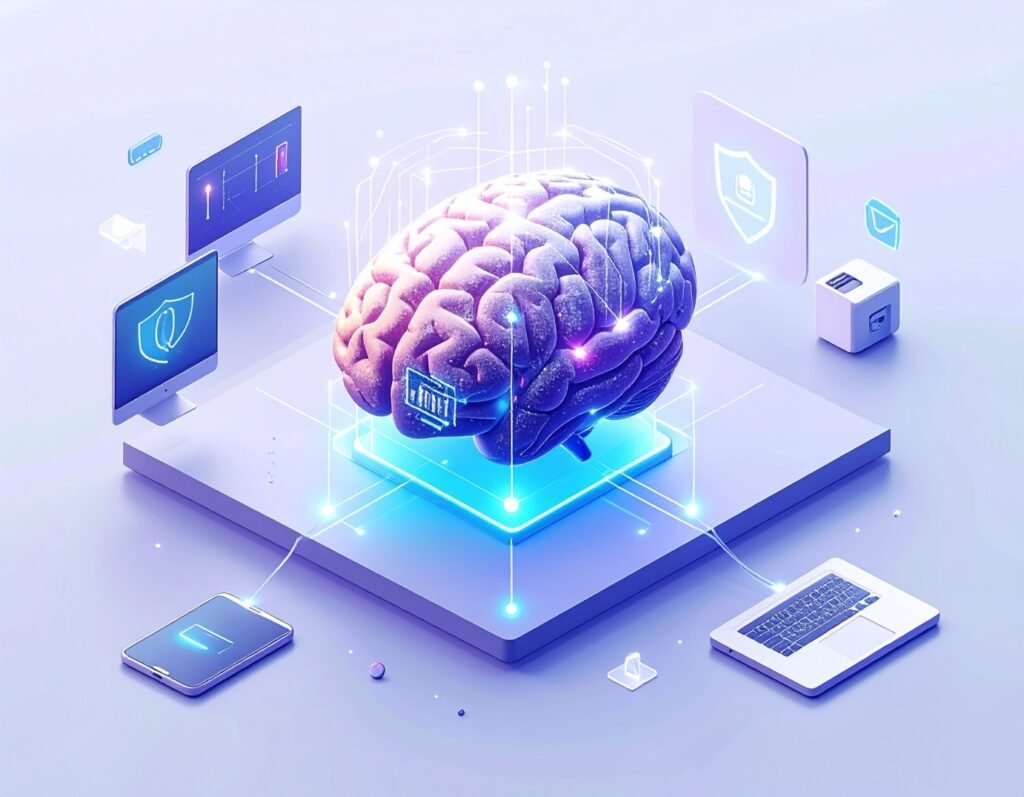In today’s digital-first era, conversations with machines are no longer science fiction—they’re daily reality. Whether you’re ordering pizza, checking a flight, or resetting a password, chances are you’ve interacted with a chatbot.
What began as simple “question–answer” scripts has now evolved into sophisticated conversational systems powered by artificial intelligence (AI), natural language processing (NLP), and design thinking. Yet one truth has become clear: a chatbot’s success isn’t defined solely by its intelligence—it’s defined by its user experience (UX).
A chatbot can have the most advanced algorithms in the world, but if the conversation feels clunky, confusing, or cold, users will abandon it. On the other hand, a bot with simple capabilities but a thoughtful, intuitive, and empathetic design can delight users and strengthen trust in a brand.
This article explores the intersection of AI and UX in chatbot design—drawing from psychology, design theory, real-world case studies, and future trends to show how companies can build bots that truly serve.
The Evolution of Chatbots: From ELIZA to AI-Powered Companions
The chatbot journey spans over half a century, and understanding its history reveals why UX matters so much today.
1960s – ELIZA: Joseph Weizenbaum at MIT created ELIZA, a simple text program that mimicked a therapist. Though basic, users formed emotional bonds—showing early signs of how humans anthropomorphize machines.
1990s – SmarterChild: On AOL Instant Messenger and MSN, SmarterChild entertained millions with playful responses and information lookups. It was the prototype of bots as companions.
2010s – Messaging Era: With platforms like Facebook Messenger, WeChat, and WhatsApp, chatbots exploded. Domino’s Pizza allowed orders via Messenger, while WeChat bots became mini “apps within apps” in China.
2020s – AI-First Chatbots: Today’s bots use NLP, machine learning, and sentiment analysis. They can handle complex requests, detect emotions, and integrate across platforms and devices.
What’s consistent across this timeline? Bots succeed when they adapt to human needs and communication styles.
The Psychology of Talking to Machines
Why do humans enjoy—or sometimes hate—chatting with bots? The answer lies in psychology.
Anthropomorphism: As Clifford Nass and Byron Reeves wrote in The Media Equation, people treat computers “like people.” If a bot is polite or witty, we respond emotionally.
Cognitive Load: Long, complicated prompts exhaust users. Daniel Kahneman (Thinking, Fast and Slow) shows how humans prefer “System 1” (fast, intuitive) thinking. Chatbots must align with that.
Trust and Transparency: Studies show users forgive mistakes when bots clearly admit limitations (“I may not get this right—let me try”) rather than pretending to be human.
End-Experience Effect: Users remember the “peak” and the “end” of an interaction. A chatbot that ends with clarity (“Your order is confirmed. Here’s the tracking link.”) creates loyalty, even if the middle had hiccups.
The lesson? Designing for psychology is as important as designing for technology.
What Exactly Is Chatbot UX?
Chatbot UX is the total experience a user has when interacting with a bot—from the first message to the final resolution. It includes:
Ease of access: Can the bot be found and used without friction?
Conversational flow: Do messages feel natural, logical, and coherent?
Personalization: Does the bot recognize past interactions and adapt its responses?
Efficiency: Are answers accurate, fast, and relevant?
Error handling: Does the bot recover gracefully when it doesn’t understand?
Alan Cooper, in About Face: The Essentials of Interaction Design, reminds us: the best digital tools “stay invisible.” The less a user notices the underlying system and the more it feels like a natural conversation, the stronger the UX.
The Two Faces of Chatbots
Chatbots today generally fall into two broad categories:
Customer-Service Bots
Built for FAQs, tracking, billing, and repetitive queries.
Examples: UPS’s Ask UPS, Alaska Airlines’ Ask Jenn.
Value: Reduce call-center load, provide 24/7 service, cut costs.
Interaction Bots
Built for task-specific actions like ordering, booking, or shopping.
Examples: Domino’s Pizza bot (ordering on Messenger), Progressive’s Flo (insurance quotes).
Value: Add convenience, often blending menus, carousels, and text.
Service bots replace effort; interaction bots create new channels for engagement. Both rely on UX to succeed.
Why Businesses Are Betting Big on Chatbots
Three key drivers fuel chatbot adoption:
Cost efficiency: Gartner predicts bots will save businesses over $80 billion annually by 2030 in service costs.
Consumer behavior: Platforms like WeChat in China proved customers are comfortable messaging businesses like they do friends.
Voice-first culture: Alexa, Siri, and Google Assistant created a global appetite for conversational interactions.
For businesses, chatbots are no longer optional—they are frontline brand ambassadors available 24/7.
The User’s Perspective: Love and Frustration
Users appreciate bots for their speed and availability, but frustration is equally common.
Misunderstood intent (“townhome” vs. “house”).
Rigid scripts that force users down linear paths.
Repetition (“please re-enter your email” multiple times).
As Don Norman (The Design of Everyday Things) emphasizes, good design adapts to human behavior—not the other way around. Transparency also matters: when users know they’re talking to a bot, they simplify their input (“track package” vs. “Can you please tell me where my order is?”), often improving outcomes.
Measuring Engagement: Beyond Counting Messages
A bot’s success isn’t measured by how many conversations it handles—it’s measured by satisfaction and outcomes. Key metrics include:
Task completion rate – Did the user accomplish their goal?
Conversation depth – Was the chat meaningful or abandoned midway?
Retention – Do users return to the bot?
Sentiment – Was the conversation positive or frustrating?
Feedback – Ratings and comments provide qualitative insight.
Daniel Kahneman’s research reminds us: people judge experiences not by averages but by moments. A chatbot that resolves a tricky issue well—or seamlessly escalates to a human—creates stronger loyalty than one that handles most tasks but fails painfully at the end.
The Role of Conversational AI
Modern bots are no longer limited to scripts. With conversational AI—an integration of NLP, machine learning, and sentiment analysis—chatbots can:
Recognize varied phrasing (“reset password” vs. “can’t log in”).
Retain context across messages.
Adapt tone and responses to user behavior.
Learn and improve through continuous interaction.
Michael Cohen’s Voice User Interface Design highlights that successful conversational systems must understand not just words, but expectations of dialogue: nuance, slang, and emotion.
When AI capabilities meet thoughtful UX, bots stop feeling mechanical and start feeling human-like.
UX Design: The Soul of Effective Chatbots
Great chatbot design blends psychology, design, and engineering.
1. Know Your Users Deeply
Don Norman emphasizes that design starts with empathy. Map your users’ goals, language, and frustrations before building flows.
2. Keep Conversations Simple
Avoid jargon. Short sentences, quick replies, and structured options reduce fatigue.
3. Inject Personality
Bots with personality engage better—like Duolingo’s witty owl or Woebot’s empathetic tone. But consistency with brand voice is key.
4. Prioritize Accessibility
Comply with WCAG guidelines, support voice input, and avoid designs that exclude users with disabilities.
5. Design for Omnichannel
Ensure the experience is consistent across apps, web, Messenger, WhatsApp, Slack, and voice assistants.
6. Provide Human Handoff
Always offer a smooth transition to human support. Nothing frustrates users more than being “stuck” in a bot loop.
7. Test, Measure, Iterate
Jesse James Garrett (The Elements of User Experience) stresses that UX is never static. Analytics—drop-off rates, feedback, sentiment—should drive constant refinement.
Real-World Examples of Success
Banking: Erica (Bank of America) helps track spending, manage bills, and detect fraud—proving bots can be both secure and helpful.
Retail: Sephora’s Virtual Artist blends AR and chat to let users “try on” makeup, driving engagement and conversions.
Travel: KLM Airlines Messenger Bot sends boarding passes and updates, cutting support workload.
Healthcare: Babylon Health offers symptom checks and scheduling, reducing patient stress and wait times.
Education: Duolingo’s chatbot gamifies language learning with adaptive difficulty.
Each case underscores one lesson: AI provides capability, but UX delivers trust.
Common Pitfalls Businesses Must Avoid
Overpromising intelligence – Bots that “pretend to be human” but fail destroy trust.
Rigid flows – Users dislike being forced into one-size-fits-all paths.
Memory loss – Forgetting context is one of the fastest ways to frustrate.
Privacy risks – Collecting sensitive data without transparency raises skepticism.
As Melanie Mitchell (Artificial Intelligence: A Guide for Thinking Humans) warns, AI is powerful but far from human-like. Honesty about limitations builds credibility.
A Practical Framework for Designing Chatbots
Designing a successful chatbot isn’t guesswork—it’s a structured process:
Research – Identify user needs, pain points, and preferred channels.
Flow Mapping – Sketch conversation paths, including success and failure routes.
Tone & Personality – Define voice aligned with brand identity.
Prototyping – Use tools like Botmock, Voiceflow, or Dialogflow to test flows.
Testing – Run usability sessions with real users.
Deployment – Roll out gradually with monitoring.
Iteration – Refine based on metrics and feedback.
The Future of Chatbots
The chatbot market is expected to surpass $34 billion by 2025 (Statista), with near 25% annual growth. The next wave will bring:
Emotionally intelligent bots – Detecting tone and adjusting responses.
Proactive experiences – Anticipating needs (flight check-ins, reminders).
Hyper-personalization – Predictive analytics delivering tailored solutions.
Voice-first design – With smart speakers, voice-enabled bots will dominate.
IoT integration – Imagine paying a bill via chatbot while adjusting your smart thermostat.
Generative AI – Using models like GPT to generate dynamic, context-aware conversations.
Joseph Weizenbaum, creator of the early chatbot ELIZA, cautioned that humans tend to over-trust machines. The challenge now is not to fool people into thinking bots are human—but to make bots reliably useful companions.
Conclusion: Building Bots That Truly Serve
Chatbots have grown from gimmicks into core touchpoints of customer experience. But their success depends on more than just AI—it rests on design grounded in empathy, simplicity, and trust.
A great chatbot is:
Intuitive – Feels natural and easy.
Efficient – Saves users time and effort.
Reliable – Transparent about limitations.
Human-centric – Serves thousands, yet feels personal.
The chatbot revolution isn’t about replacing humans—it’s about reimagining interaction. When AI and UX work hand in hand, businesses don’t just build bots—they build meaningful connections at scale.







